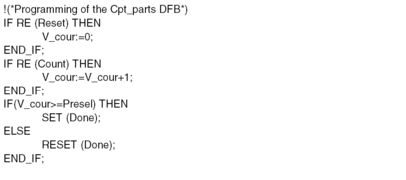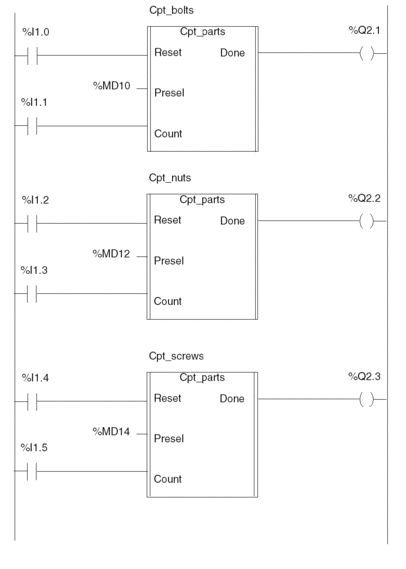General
This example of programming a counter using a DFB is provided for instruction purposes.
Characteristics of the DFB Type
The DFB type used to create the counter is as follows.

The elements of the Cpt_parts DFB type are
as follows.
Elements |
Description |
|---|---|
Name of the DFB type |
Cpt_parts |
Input parameters |
|
Output parameters |
Done: preset value reached output (BOOL type) |
Public internal variable |
V_cour: current value of the counter (DINT type) |
Operation of the Counter
The operation of the counter must be as follows.
Phase |
Description |
|---|---|
1 |
The DFB counts the rising edges on the Count input. |
2 |
The number of edges it counts is
then stored by the variable |
3 |
When the number of edges counted
is equal to the preset value, the |
Internal Program of the DFB
The internal program of the DFB type Cpt_parts is defined in Structured Text as follows.

Example of Use
Let
us suppose your application needs to count 3 part types (for example,
bolts, nuts and screws). The DFB type Cpt_parts can
be used three times (3 instances) to perform these different counts.
The number of parts to be procured for each type is defined in the words %MD10, %MD12 and %MD14 respectively. When the number of parts is reached, the counter sends a command to an output (%Q1.2.1, %Q1.2.2 or %Q1.2.3) which then stops the procurement system for the corresponding parts.
The application program is entered in Ladder language as follows.
The 3 DFBs (instances) Cpt_bolts, Cpt_nuts and Cpt_screws are used to count the different
parts.



